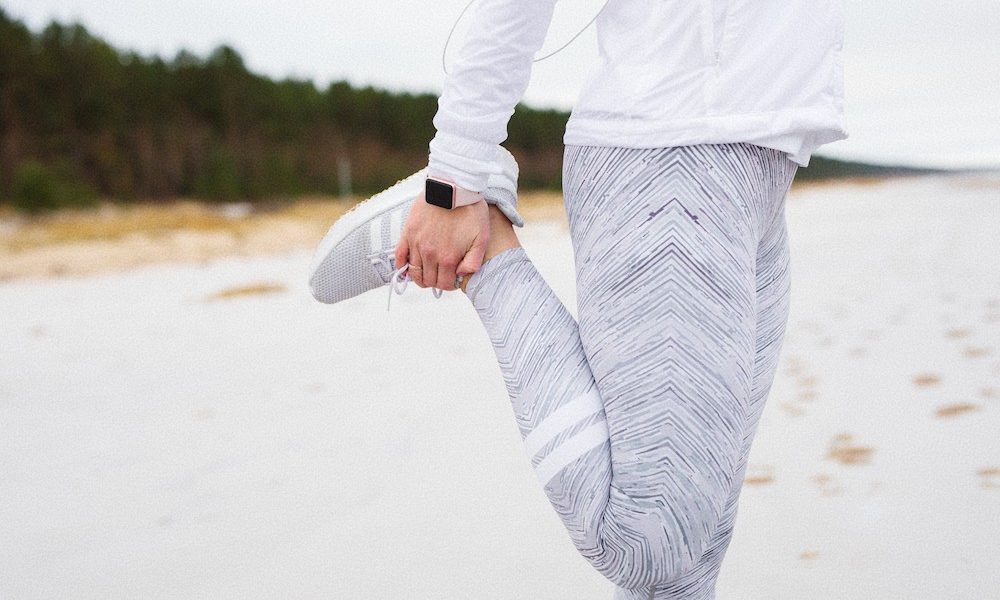Are you motivated to exercise because of your size or appearance? Here’s why it’s healthier for you in the long run to shift your mindset.
BY: TAYLOR WOLFRAM, MS, RDN, LDN
There’s a common fear amongst people who have been entrenched in mainstream gym culture. There’s a belief that without their regimented exercise programs, they may never work out again.
Unfortunately, this idea stems from our culture’s all-or-nothing mentality that leads to extreme yo-yoing behavior. Some people are either all in through a diet or exercise regimen, and when that gets to be too much, they binge or overeat all the foods they were restricting and quit exercising. It’s an unfortunate pattern that our culture has set up and not surprisingly, it’s not good for your mental or physical health.
So what’s a better way to move your body? Exercise intuitively.
The key is to trust that your body knows when, what, and how much to move. Here’s why it’s better when you do.
1. It goes beyond appearance.
There is so much more to exercise than its impact on your physical appearance. Consider working out for the sheer enjoyment of it, or focus on how it makes you feel rather than to look a certain way.
The truth is, when you hinge exercise on your appearance, you’re less likely to have a positive relationship with it. You’re more likely to go through periods of intense exercise and periods of being completely sedentary. It can even lead to an exercise disorder with serious health consequences.
When you exercise for reasons other than appearance, it becomes a habit that is neither extreme nor punishing. It’s truly enjoyable and you reap the mental, physical and emotional benefits of moderate, regular activity.
2. Find a more natural way to move.
Humans naturally like to move, so give yourself space and freedom to tune in and listen to your body. What kind of movement sounds good? What works with your physical abilities? When does your body get antsy for movement? What makes you feel the best? How do you feel when you don’t exercise? You must first find what feels good, before working on fine-tuning your routine once you’ve developed a more positive relationship with exercise.
Trying a variety of strength, cardio, flexibility and balance activities will help you explore various types of activities so you can learn what you enjoy the most and what feels the best. If you’re into the gym scene and are eager to try equipment, work with a fitness professional to show you the ropes.
3. You’ll find more enjoyment in movement.
Once you explore all the benefits of exercise that have nothing to do with how you look, you’ll start building deeper motivation to make it a habit and actually enjoy it more. These include:
- Enhanced stress management (sometimes sweating can feel downright therapeutic)
- Better sleep (fall asleep quicker and sleep more deeply)
- Feeling more energized during the day (wake up your body by moving and stretching)
- Stronger muscles and bones (for better functionality as you age)
- Increased lung capacity (and not getting winded doing everyday activities)
- Reduced risk of chronic disease (such as heart disease and diabetes)
- Better mood (endorphins for the win)
- Increased productivity (walk breaks during the workday do wonders)
Just as gentle nutrition comes after you make peace with food, you can find a way to settle back into standard physical activity guidelines once you’re able to build a healthier relationship with exercise.
And when you do, you’ll find yourself trusting in your body again.
Adapted from the original post.
HEADER IMAGE: KASPARS GRINVALDS
Taylor Wolfram, MS, RDN, LDN is a Chicago-based Registered Dietitian who helps others lead a life of compassion that improves their overall relationship with food, exercise, and their bodies. As an expert in eco-ethical and vegan lifestyles, she’s passionate about helping individuals end their struggle with food and live an unrestricted life in the kitchen.

